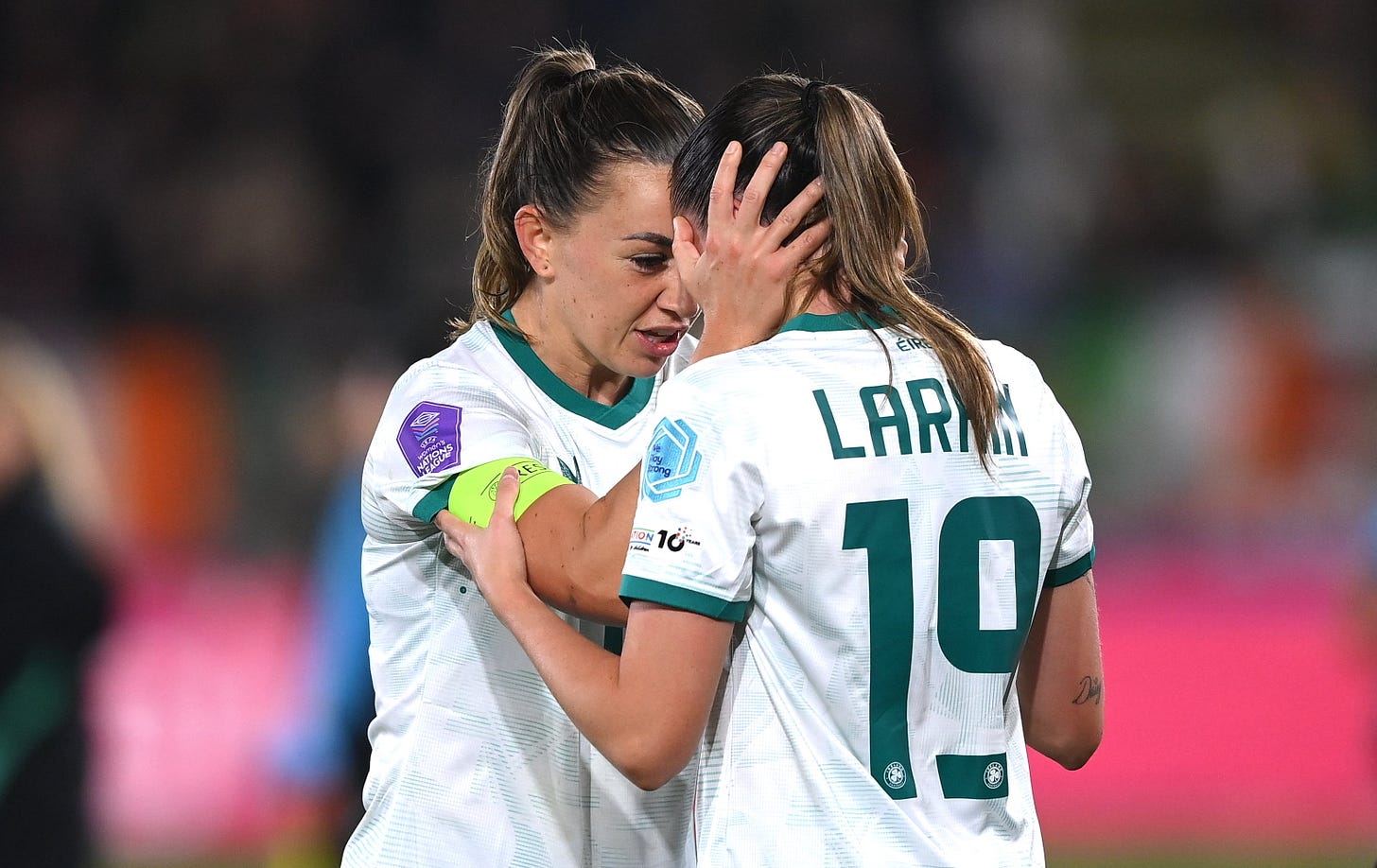Why Ireland's Nations League promotion is a turning point for the Girls in Green
Carla Ward's side return to League A with a point prove
Late drama, a Katie McCabe screamer and a buzzing Aviva Stadium. Ireland’s Nations League playoff against Belgium had it all.
In the end, Carla Ward’s side ended up claiming a dramatic 5-4 aggregate win across the two-legged tie.
It was closer than Ireland’s head coach would have liked after…
Keep reading with a 7-day free trial
Subscribe to The Cutback to keep reading this post and get 7 days of free access to the full post archives.




